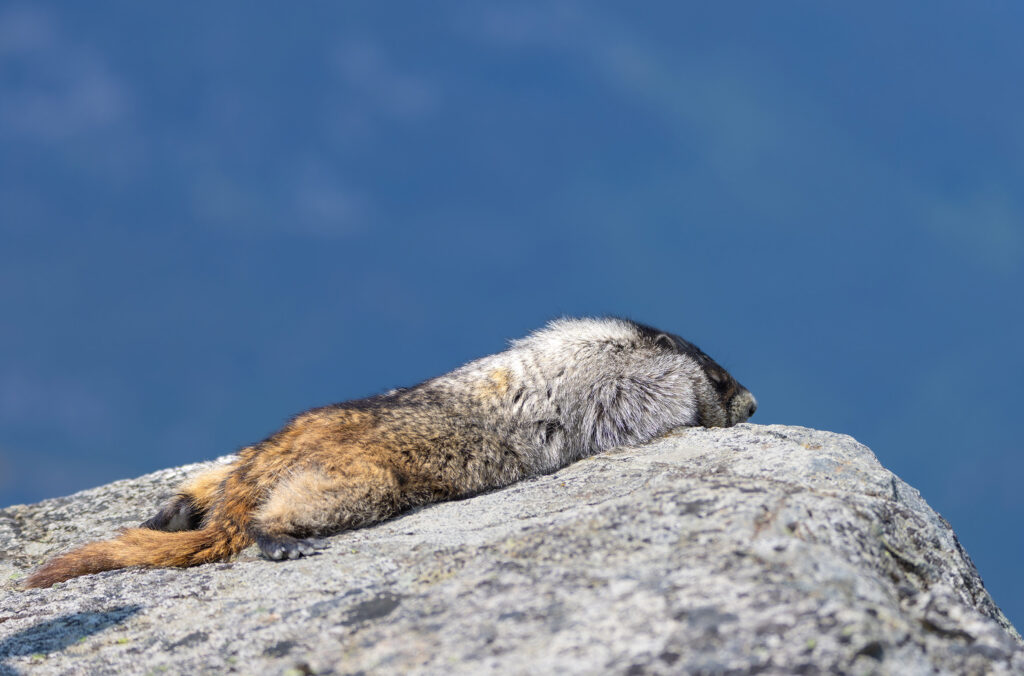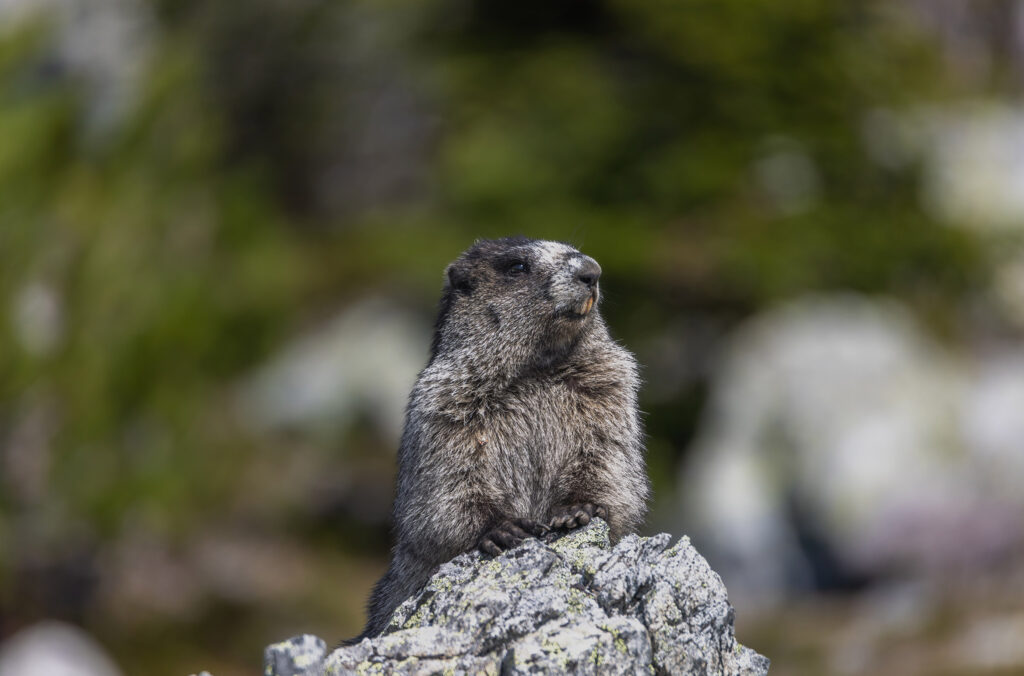What’s in a Name?
The first European name for Whistler Mountain was London Mountain, given because of the low-lying fog found in the valley and the mining claim in the area.
As more tourists started to arrive and the ski resort was developed, they wanted to rename the mountain. That’s when they looked towards the whistle. While exploring the mountains, people could hear a whistling sound high up in the alpine, but where was it coming from? Maybe it was the wind through the trees or maybe it was a local resident?
View this post on Instagram
The sound belongs to the hoary marmot, one of the few mammals that call the alpine home. It is a high-pitched call that they use to signal danger to members of their colony. And this distinctive noise is how Whistler got its name!
However, the origins of Whistler go back much further than settler history, with the Squamish Nation and Lil’wat Nation stewarding this land since time immemorial. In Squamish, the name for this mountain is Sk̲wik̲w, which means marmot, and in Lil’wat it’s called Cwítima, from the root word cwíten, which means to whistle. First Nations names tend to reflect the land versus being named after a person or a place far away.
Hoary Marmots
The hoary marmot is a diurnal mammal, which means they are active during the day and can typically be seen early in the morning or later in the afternoon to avoid the midday heat. During this time you’ll see them sunning themselves on rocks and grazing on the array of grasses and wildflowers found at higher elevations as they build up as much fat as possible for their next hibernation.

They hibernate in deep burrows in the alpine soil, found underneath boulders or surrounded by rocks to help protect them from any digging predators such as coyotes.
Hoary Marmot Fun Facts
- They are the largest ground squirrel in North America! On average the hoary marmot weighs around four or five kilograms but can weigh up to 14 kilograms.
- Their high-pitched call has also given them the nickname, the Whistle Pig!
- Believe it or not, the hoary marmot isn’t a groundhog. They both belong to the marmot class however they are completely different species. The hoary marmot is a very social animal and lives in colonies of up to 36 individuals, however, the groundhog is solitary and only seen with other groundhogs when it is time to mate. Still not convinced? Groundhogs live in large open fields, meadows and along the edges of forests but the hoary marmot loves to live up in the alpine amongst the rocks.
- Marmots have a distinguishable grey-white fur covering their shoulders and upper back and the word hoary means greyish white.
- Their teeth are constantly growing. Like all rodents, their incisors grow throughout their life. This is why we always see them eating and grazing, not only for the nutrients but to help sharpen their teeth.
- A group of marmots is called a madness!

Hoary Marmots and First Nations Culture
The hoary marmot is important to both the Squamish and Lil’wat Nations. They would hunt marmots for their fatty meat. The Lil’wat Nation includes the marmot in some of its songs and dances, honouring the ground squirrel for teaching them how to sustain themselves throughout the winter months.
To learn more about Indigenous culture in Whistler, visit the Squamish Lil’wat Cultural Centre.
Where to Find a Hoary Marmot in Whistler
If you are planning a trip to Whistler during the summer months this is the perfect time to see a hoary marmot, as they only come out of hibernation from April to September each year. They spend all of their lives at higher elevations, so to see one of these you will need to get yourself up the mountains.
Summer sightseeing on Whistler Blackcomb is where you might be lucky enough to encounter one of these intriguing creatures. You might encounter them on a hike, or simply lounging on the rocks close to the mountain lodges, posing for a photo!

My favourite place to spot a marmot is along the Alpine Loop trail on Blackcomb Mountain. This 1.4-kilometre loop has an abundance of rocky terrain, the perfect habitat for the hoary marmot. You will need a sharp eye to spot them amongst the rocks as their grey and brown colouring means they’re well camouflaged.
They aren’t shy creatures and some will let you observe them as they go about their day but please do remember that these are wild animals and we are visiting their home, make sure to be respectful and observe at a distance.
Spring offers great value with savings of up to 25% on lodging. Stretch your stay into midweek for even more savings and a quieter village. For every third night you book between March 1 - April 30, 2025, receive a free $75 CAD Whistler Après Voucher.
For summer, book ahead and save up to 30% on lodging. Plus, you'll receive a free $150 CAD Activity Voucher on stays of 3 or more nights.
Insider Tip: BC or Washington resident? Sign up for Whistler Rewards to access additional savings and exclusive perks.


